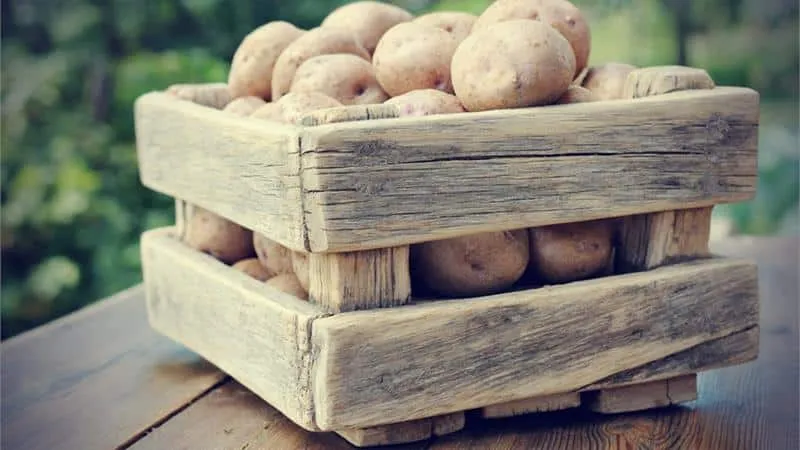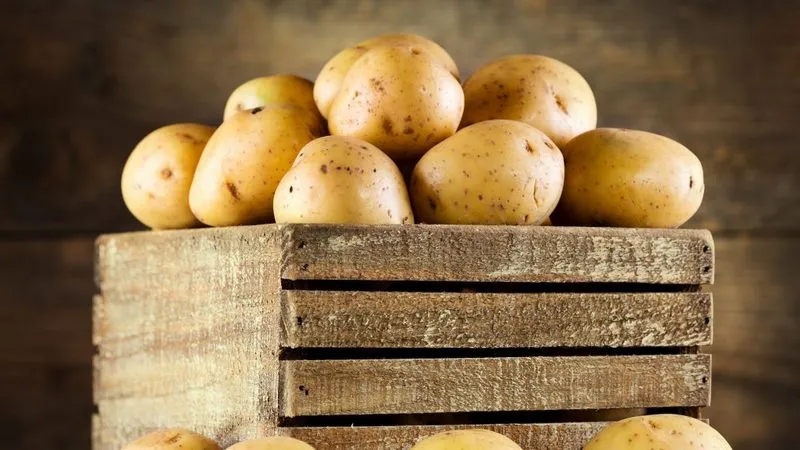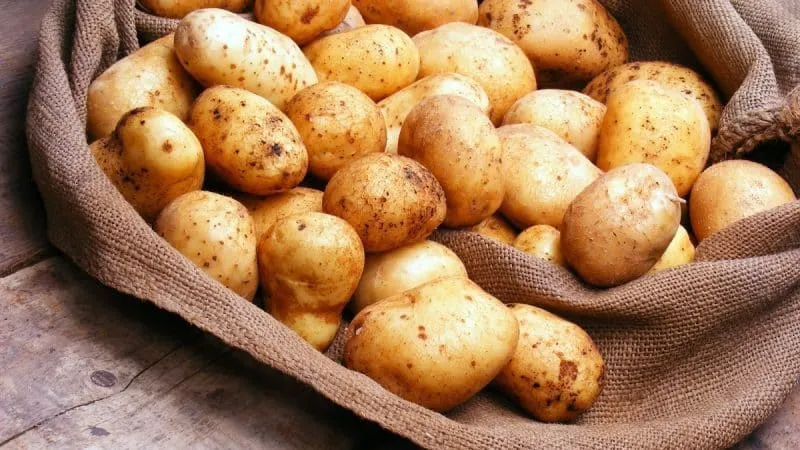There’s nothing quite like digging up smooth, large potatoes in autumn. But growing a bountiful harvest is only half the battle. Properly preparing it for storage is equally important to ensure it lasts until spring without spoilage. One of the most common questions gardeners ask is whether to wash potatoes before storing them. Some worry that doing so could ruin the entire crop.
In this article, we’ll explore whether you should wash potatoes before winter storage and which keeps better — washed or unwashed.
Table of contents
Is It Safe to Store Washed Potatoes?

Can you store washed potatoes for winter? Yes, especially if they were harvested in rainy weather. However, thorough drying is essential before storage.
The key factor in preserving your harvest is the storage conditions: the ideal temperature is between +2 and +4°C, with humidity levels of 80-90%.
Pros and Cons of Washing Potatoes
Now that we’ve established whether you can wash potatoes before storage, let’s look at the advantages and disadvantages of storing them washed.
Advantages:
- Removing dirt allows you to assess the condition of the potatoes immediately. Washed skins reveal any defects (scratches, cuts, rot, etc.). Just a few rotten potatoes in storage can spoil the entire batch.
- Washed potatoes are more pleasant to handle when cooking — they don’t dirty the kitchen, balcony, or storage area. Clean vegetables also have better market appeal, making surplus easier to sell.
- Cleaning and maintaining storage areas after keeping washed potatoes takes much less time. No need to deal with leftover soil.
Disadvantages:
- Careless washing can damage the skin. Scratches may allow infections to enter during storage.
- Drying washed potatoes thoroughly can be challenging, especially in large quantities.
- Washing requires significant water, time, and effort, as does subsequent drying.
Storage Duration: Washed vs. Unwashed Potatoes
If properly dried, washed and unwashed potatoes have similar storage lifespans.
It’s also crucial to inspect each potato before storage. Only completely healthy, undamaged tubers without signs of disease or rot should be stored for winter.
Washing Technique Before Storage
Given the effort involved in washing and drying, it’s only worth washing your entire harvest if the potatoes are caked in wet soil — common after harvesting in rainy conditions.
Otherwise, simply drying them and brushing off excess soil by hand during sorting is sufficient.
How to wash potatoes before storage:
- Choose a large container, such as an old bathtub. If using a basin, drilling holes in the bottom can help with drainage.
- Fill the container with cold water and add potatoes in small batches. Gently agitate by hand without damaging the skins. Change the water after each batch.
- Spread clean potatoes in a single layer on a prepared surface: wooden slats, metal sheets, or absorbent material like cardboard or fabric (replace and dry periodically).
- Dry in a shaded, well-ventilated area. Potatoes typically dry in 4-8 hours outdoors. Turn them occasionally for even drying.
Once dry, transfer them to crates or sacks and move to a cool place.
Tip. While washing, sort potatoes by size (large, medium, seed) and discard any damaged or diseased ones immediately.
Now your clean, thoroughly dried potatoes are ready for the next storage steps.
Preparing for Storage
Before storing, carefully inspect and sort your harvest.
Seed potatoes should be stored separately. Sort the rest by size — medium potatoes store longest, followed by large ones. Damaged potatoes should be used first, not stored.
Only whole, dry, healthy potatoes should be stored. Never store potatoes showing disease signs, damage, or scratches.
Important. Just a few diseased potatoes can ruin your entire stored crop quickly.
After sorting and drying, place potatoes in small crates or sacks and leave in a cool place for a few days before transferring to your cellar or basement.
Optimal Storage Conditions for Washed Potatoes
Washed potatoes require the same storage conditions as unwashed. Maximum shelf life is achieved at +2 to +4°C with 80-90% humidity.
Higher temperatures cause sprouting and shriveling, making potatoes unsafe to eat due to toxin accumulation.
Below 0°C, starch converts to sugar, creating an unpleasant sweet taste. However, brief exposure to slight frost causes no lasting effects.

In a Cellar or Basement
Cellars and basements are ideal for potato storage. Before use, clean the space of old crop remnants, dry thoroughly, ventilate, and disinfect. Use lime solution, copper sulfate, or a sulfur smoke bomb for disinfection.
Treat wooden crates, shelves, and storage racks with potassium permanganate solution and sun-dry thoroughly.
Note! Your cellar or basement needs proper insulation to protect against both freezing and excessive heat.
On a Balcony or Patio
In urban settings, store potatoes on balconies or enclosed patios. Insulated wooden crates with waterproof lining work well.
You can build a storage box from wood planks or thick plywood — ideally two nested boxes with insulation (like polystyrene or sawdust) between them.
Alternatively, purchase a ready-made thermal storage container with temperature regulation, capable of protecting vegetables even at -40°C.
Common Potato Storage Mistakes

Most frequent storage errors that lead to spoilage:
- Choosing the wrong variety — only late and mid-season potatoes store well until spring. Early varieties rarely last beyond November.
- Storing damp potatoes — moisture guarantees rapid rot development.
- Including poor-quality tubers — even slightly damaged or diseased potatoes will spoil the batch.
- Storing in large piles — use small crates or sacks for better air circulation and easier inspection.
- Mixing with other vegetables — the only exception is beetroot, which can absorb excess moisture when placed atop potatoes.
- Temperature fluctuations — storage above +4°C causes sprouting; below +2°C leads to freezing.
- Neglecting regular checks — periodic inspections help remove spoiled potatoes before they affect others.
Avoiding these mistakes helps preserve your potatoes until spring.
Conclusion
Whether to store potatoes washed or unwashed is a personal choice. Consider your harvest size, water availability, and drying space when deciding. Proper drying makes washing irrelevant to storage duration — both methods work equally well when executed correctly.







